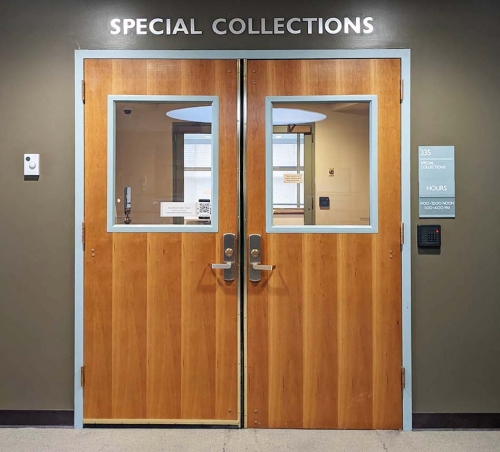We do not provide for storage for active records. Special Collections & Archives staff can provide on-site appraisals if you are unsure which records have archival value.
FAQ's
Do you provide storage space for records that we are not ready to transfer?
What is a records schedule?
A retention and disposition schedule defines the period of time that each record type should be retained by units. It allows units to dispose of records in a timely, systematic manner and to identify those records that have historic value and should be transferred to Special Collections & Archives.
What happens to records once they arrive at Special Collections?
Once materials have been transferred to Special Collections & Archives, archivists will create an accession record. This documents the legal and physical transfer of materials and describes the contents.
Records then enter into the queue for processing. Processing includes the appraisal of the content and the elimination of duplicates and non-records that do not warrant long-term retention.
The final step in archival processing includes the preparation of a finding aid. The finding aid provides an overview of the transferring unit and a description of the records summarizing the content, date spans, and how they are organized.
Can I just scan all the records in my office?
If you need to save space, we suggest spending the time you would have devoted to digitizing records to identify which ones can be discarded and those which can be transferred to Special Collections & Archives.
I need information from the records at the archives. How should I proceed?
Submit a reference request and an archivist can find the documents and deliver them to you electronically. If the request exceeds a certain amount of time needed to ascertain the requested information, we will book an appointment for you to review the materials at Special Collections & Archives. Requests and appointments can be made here.
What do I do with my email?
Email is the modern equivalent of correspondence and may be considered an official record. Union College uses the Capstone Approach and identifies accounts where email needs to be retained to meet legal requirements and to document important decisions made at the College. For those account holders, email should be exported as .MBOX file prior to be being transferred to Special Collections & Archives.
How should I name my files?
We advise that you find a system that works for your unit or department and be consistent. There are general best practices in the slide below.
File Naming Best Practices
- Go from general to specific:
- department_project_purpose_date
- department_project_purpose_date
- 21-32 characters is standard
- what_makes_for_the_best_filename
- what_makes_for_the_best_filename
- Lowercase is standard (uppercase can be used to distinguish words in a filename
- 2022FilenameBestPracticesNotes
- 2022FilenameBestPracticesNotes
- Don't use special characters : \ $ ? < > (keep it human readable) Dates
- YYYYMMDD or YYYY
- YYYYMMDD or YYYY
- Don't use spaces! Use underscores, hyphens or nothing at all
- filenameusingnospaces
Example based on content
Project name: Building plans
Location: ISEC
Date: 20180501
Type of data: blueprints
Version: final
File type: pdf
buildingplans_ISEC_20180501_blueprints_final.pdf
Example based on content
Author: Office of Communications
Title: Commencement
Date: 2022
File type: Should automatically include file extension
communications_commencement2022.mp4

Special Collections
Schaffer Library
807 Union St
Schenectady, NY 12308
Contact
Office Hours